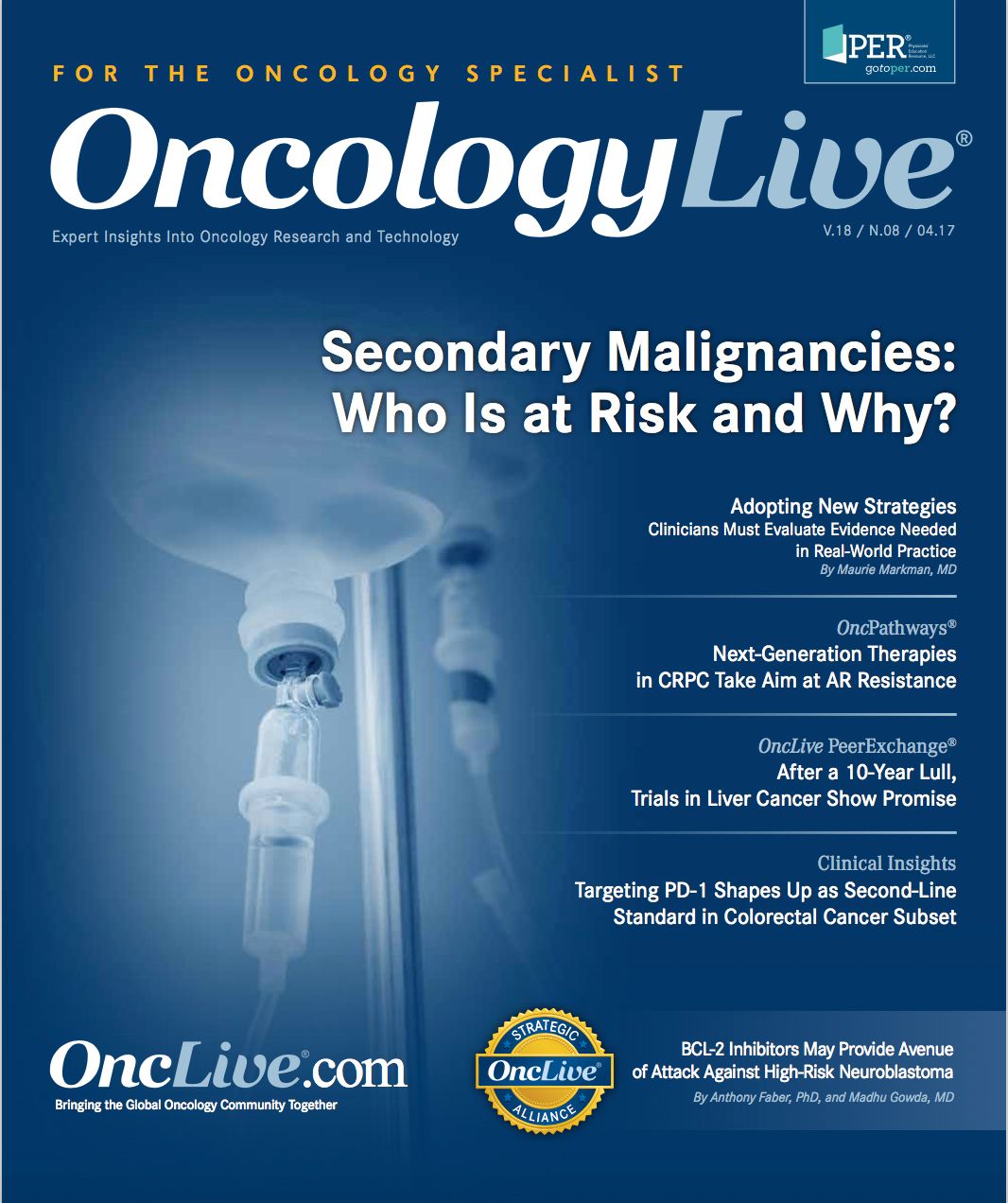Novel Drug Targets Cancer Stem Cell Pathway in Metastatic CRC Trial
The international CanStem303C trial is evaluating the combination of napabucasin, the most advanced cancer stemness inhibitor in development, with FOLFIRI chemotherapy in patients with previously treated metastatic colorectal cancer.
Axel Grothey, MD

Axel Grothey, MD
Napabucasin (BBI-608), the most advanced cancer stemness inhibitor in development, is being evaluated in combination with FOLFIRI chemotherapy in patients with previously treated metastatic colorectal cancer (mCRC) in a large phase III trial that aims to test a long-pursued theory about overcoming resistance to cytotoxic therapy.
The international CanStem303C trial is seeking to randomize 1250 patients in a 1:1 ratio to either napabucasin plus FOLFIRI or FOLFIRI alone (NCT02753127). The addition of bevacizumab is permissible in both arms at the investigator’s discretion (Figure).
CRC indicates colorectal; ECOG, Eastern Oncology Cooperative Group; ORR, objective response rate; OS, overall survival; PFS, progression-free survival.
Napabucasin is an orally administered small molecule that inhibits the phosphorylation of STAT3, a transcription factor involved in regulating and signaling of embryonic stem cells. Overactivated STAT3 may drive tumor development by helping to maintain the ability of cancer stem cells to renew and differentiate.1
“We believe that cancer is mainly propagated by undifferentiated and primordial stem cells that are very chemotherapy-resistant and can repopulate tumors, even when the differentiated cancer cells are being eliminated by chemotherapy. So we have been looking at a stem cell inhibitor for quite some time,” said Axel Grothey, MD, a medical oncologist at the Mayo Clinic in Rochester, Minnesota, in an interview with OncologyLive®.
Grothey, who has conducted research into napabucasin and is an investigator on the CanStem303C trial, said the drug could be a “game-changer” for patients with stage III mCRC, where the risk of recurrence is 25% to 30%.
“Patients with colorectal cancer are common, and when they have metastatic disease, in spite of all the advances we’ve made in recent years, the median survival is still only in the range of about 3 years. Having a drug that can improve outcomes clearly addresses an unmet need, because these patients will eventually die. So this is exactly what this trial is trying to address,” said Grothey, who also is a professor of oncology at the Mayo Clinic School of Medicine.
He noted that the implications for the study go beyond CRC. “The 3 hot topics in oncology right now are immunotherapy, inhibiting certain activated molecular pathways that characterize tumor biology, and finding agents that can inhibit cancer stemness characteristics,” Grothey said. “If we can prove efficacy in this study, it will open the door to a lot of research looking into cancer stem cells.”
Previous studies have shown positive results for napabucasin. In a phase Ib/II study, results confirmed that napabucasin can be safely combined with FOLFIRI, with or without bevacizumab, in patients with advanced CRC who had received an average of >2 prior lines of therapy. Among 56 evaluable patients, the overall response rate was 29% including 1 complete response. The disease control rate, including complete and partial responses and stable disease, was 88%.2
In the CanStem303C trial, the primary endpoint is an improvement in median OS. Secondary endpoints include OS in biomarker-positive patients, defined as positivity for expression of nuclear beta-catenin, another cancer stemness signaling protein, and/or phosphorylated STAT3 by IHC staining on formalin-fixed, paraffin-embedded tissue. The trial is open to patients regardless of biomarker status.
In terms of adverse events (AEs), the most commonly observed with napabucasin therapy thus far has been diarrhea. “We recommend, in the protocol, very aggressive and preemptive management of diarrhea, so that when the patients start the drug, they have been supplied with antidiarrheal agents, and have been educated that they need to hydrate themselves,” Grothey said.
The other main AE investigators expect to see is fatigue, which is linked to the diarrhea. Other AEs are mild, including nausea, anorexia, and loss of appetite, Grothey said, but there is little to no concern of major toxicity in terms of blood counts, fevers, or high risk of infections. “It gets confounded, of course, by the toxicity of the underlying chemotherapy, the FOLFIRI backbone. It’s something we’ll closely monitor,” Grothey said.
The CanStem303C trial is among nearly a dozen clinical trials testing napabucasin in a range of tumor types that drug developer Boston Biomedical, Inc, is sponsoring. Phase III studies are ongoing in gastric/gastroesophageal junction adenocarcinoma (NCT02178956), pancreatic cancer (NCT02993731), and nonsquamous non—small cell lung cancer (NCT02826161).
References
- Yuan J, Zhang F, Niu R. Multiple regulation pathways and pivotal biological functions of STAT3 in cancer. Sci Rep. 2015;5:17663. doi: 10.1038/srep17663.
- Bendell JC, O’Neil BH, Starodub A, et al. Cancer stemness and inhibition and chemosensitization: phase 1b/II study of cancer stemness inhibitor napabucasin (BBI-608) with FOLFIRI +/-bevacizumab (Bev) administered to colorectal cancer (CRC) patients (pts). Poster presented at: 2017 Gastrointestinal Cancers Symposium; January 19-21, 2017; San Francisco, CA. Abstract 593. meetinglibrary.asco.org/content/177263-195.
- Jonker DJ, Nott L, Yoshino T, et al. A randomized phase III study of napabucasin [BBI608] (NAPA) vs placebo (PBO) in patients (pts) with pretreated advanced colorectal cancer (ACRC): the CCTG/AGITG CO.23 trial. Ann Oncol. 2016;27(suppl 6): 4540. doi: 10.1093/annonc/mdw370.03.
In a phase III study, napabucasin monotherapy improved overall survival (OS) versus placebo (HR, 0.24) for patients with pretreated advanced CRC whose tumors tested positive for phosphorylated STAT3 (n = 55).3 STAT3 positivity was determined by immunohistochemistry (IHC) testing on archival tissue; a STAT3-high level is defined as staining of ≥5% of cancer cells and ≥2+ on tumor stroma.




